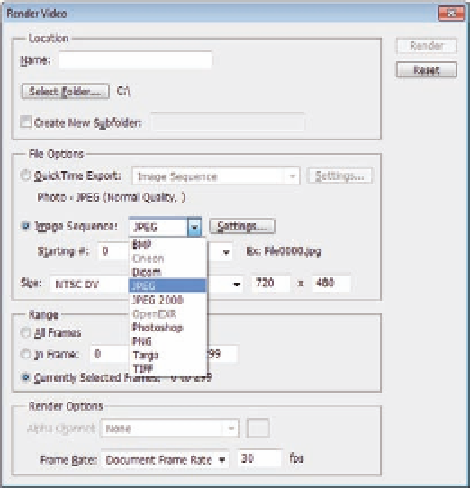Graphics Programs Reference
In-Depth Information
Figure 13.7
Exporting animation as
sequenced images.
The settings button next the Image Format drop-down list lets you conigure
the settings associated with each type of formats.
When you export video as an image sequence, you can specify the name of
the sequenced frames by using the Naming option under the Image
Sequence Export option, and you can set a starting number for the image
sequence by adding it to the Start # ield. In the Digits ield, you can set the
number of digits that is used to name the exported frames; the digits are
limited to ive digits. You can use this option to name the exported frames
sequence, as the exported iles are often numerous, and you might like to
keep the frame names in sequence for easy use. For example, when you
import the sequenced iles to Flash, Flash can understand the naming
sequence. You can specify only the irst frame, and Flash will import the rest
of the sequence.
It is not necessary that the output dimensions be the same as the source
animation content in Photoshop. You can specify the size of the output video
or image sequence content through the Size Presets list. The Size Presets list
is important because it includes a wide range of size standards in the video
production based on many factors such as the TV broadcasting system
(either PAL or NTSC). The Presets list also depends on the output aspect ratio
and the type of the output video. For example, the PAL system is one of the
standards supported in many countries in Africa and Middle East. This
standard's dimension is 720px
×
576px with a frame rate of 25 fps. NTSC is
another TV broadcasting standard and is commonly used in North America
and Japan. However, this format's standard is 720px
×
486px with a frame
rate of 29.97 fps.

